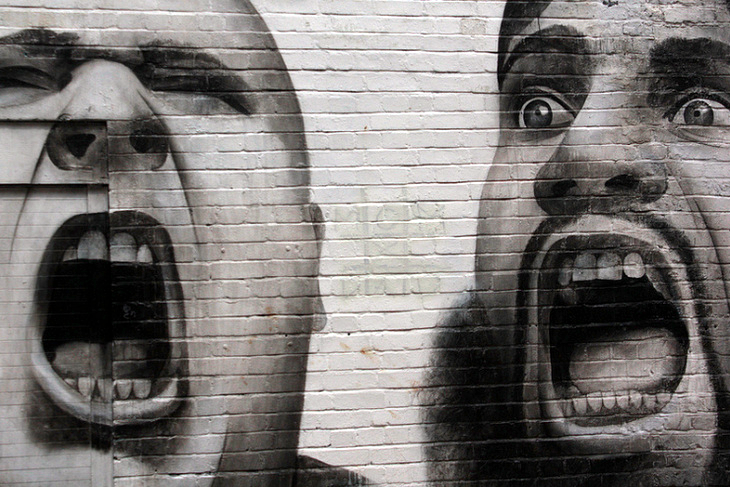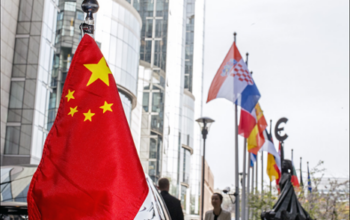During 2015 Western Europe has suffered an increase in attacks from jihadist groups as well as the violent acts of anti-Islamic groups. After the recent jihadist attacks in Belgium and France, extremism keeps posing a complex challenge for the European Union and its citizens; as it affects security in general and raises questions of migration, ethnic and religious minorities in Europe. Several EU nations were targets of extremist violence (jihadist and right-wing) that has led to considerable negative impacts for European society; creating fear as well as breeding violence and prejudice.
According to the 2016 Europol report (TE-SAT 2016), The a significant increase of jihadist terrorism occurred recently, a jump from 4 jihadist attacks in 2004 to 17 attacks in 2015 was registered. In addition, a jump from zero to 9 right-wing terrorist was also reported by Europol. Two extreme ideologies that oppose each other are directly impacting today’s Europe however neither of them are impacting positively the future of EU.
Jihadist Terror
During last year the total number of jihadist attacks against an EU member state was seventeen; of which fifteen were in France and two in Denmark; These attacks were responsible for 150 victims and many injured persons. This year, twelve jihadist attacks were reported, of which six were in Germany, four in France and one in Belgium. The total number of fatalities are so far 126 fatalities and many others severely injured.
According to an article by Quintan Wiktorowicz, a former White House security adviser, jihadism is rooted in the belief that a “struggle” is a necessity to remove the obstacles to reestablishing “God’s rule” on Earth and protecting the Muslim community. The long-term complex geopolitical conflicts involving EU member states and terrorist groups could be one of the strongest reasons for jihadism in Europe. For instance several counter-terrorism missions are significant measures of security of French foreign policy, as French authorities state that “France and French interests have been the target of international terrorism linked to the situation in the Near and Middle East in the 1980s (…) and international jihadist networks close to or inspired by Al-Qaeda since the 2001 attacks in the United States and the subsequent war on terror.”
Right-wing Terrorism
Europol also reported an increase in violent attacks inside several EU member states that were classified as right-wing terrorism. Some of these countries did not previously suffer from jihadist attacks but yet the growing number of anti-islamic sentiment is considerable.
In the aftermath of the deaths of twelve journalists in January 2015, right-wing attacks took place against a Jewish supermarket, six mosques and a restaurant. Several local mosques were targets of gunshots in Port-la- Nouvelle, Albi, Saint Júery, Vendôme, Soissons and Digne-les-Bain. Another right wing incident in France occurred at a kebab shop near a mosque which used an improvised explosive device.
According to the 2016 Europol report, anti-immigration and anti-Islam views remain a vital focus of right-wing extremists. The German domestic intelligence service 2015 report also reports that jihadist terror has led right-wing extremists to be able to extend their anti-Islam and anti-immigration propaganda, in addition to sensationalizing the threat by spinning it as an “ethnic-cultural conflict”.
Islamophobia: A Reaction to Terrorism?
Over the decades, anti-Islamic views have been at the core of right-wing nationalists’ agenda, this view is deeply rooted on the idea of us versus them and a clear distinction between the two. According to right-wing movements, Europe is being “invaded” by migrants and therefore will be “Islamified” by muslim migrants, refugees and asylum-seekers. The starting process of this narrative is the mass migration that followed WWII, and now uses recent migration – especially Syrian and North African refugee flows from conflict areas or poor zones – to argue against this invasion. The idea of migration as an insidious process is generally accepted and it is opposed to a humanitarian one.
In 2015, Islamophobic offenses targeting the Muslim community in general have increased, according to Europol. In Poland, for instance, a man was arrested for conspiring to set fire on a mosque. In addition, the Polish police arrested 13 members of the right-wing extremist group Blood & Honour. Many materials related to fascism were found, as well as live ammunition and air weapons.
Violence against refugees and asylum seekers has also increased. According to Europol, “EU Member States have increasingly reported that the far-right try to exploit the current migration crisis in an effort to obtain support and stoke resentment.”. In other words, in order to gain political support, the right-wing movement and political parties are exploiting the current refugee crisis and economic issues to spread and support their ideologies. Some parties are against hosting refugees while others are advocating for white and Christian religious dominance.
Europol also reported that by the end of 2015, the German Interior Ministry reported that more than 800 attacks against Muslim properties occurred, in comparison to 198 in 2014. These incidents range from vandalism to arson. Most of these attacks were classified as anti-immigrant right-wing. In addition, a relevant share of these incidents were carried out either by perpetrators that remain unknown, or by individuals or small groups with no direct links to right-wing extremism.
The jihadist attacks did play a significant role for reinforcing the propaganda and attention of right-wing ideologies but certainly did not originally cause the rise of right-wing extremism. One can further argue that in contrast with Jihadist terror, which is inflicted by direct violence, the violence perpetrated by right-wing groups affects mostly structures of society, for instance adopting anti-immigration policies or integration processes.
The local population’s sentimental reactions of these attacks are clear: fear and anger. Eventually, each side of the population will construct an enemy’s face. “The domino effect of terror” is the chain of reaction caused by fear. The sentiments of revolt combined with a desire for justice can create the continuous effect of violence towards both Europeans and Muslims; as victims or perpetrators.
Leticia Santos
Image 1: Attribution-ShareAlike 2.0 Generic. cylonfingers. Mural symbolizing extremism in Shoreditch, London.






